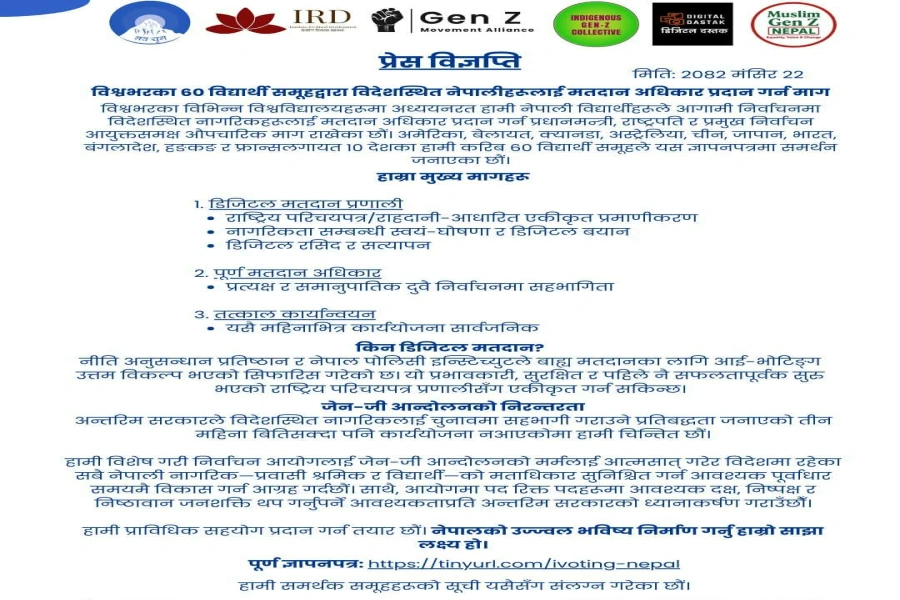Individuals earning Rs 100,000 can now secure real estate loans with monthly installments up to Rs 70,000
KATHMANDU, May 17: The Nepal Rastra Bank (NRB) has unveiled a comprehensive review of its monetary policy, introducing several key measures aimed at stimulating the real estate, automotive, and stock markets. This review is expected to enhance the profitability and capital base of banks, promoting overall economic stability.
A significant highlight of the review is the adjustment in the debt service to gross income ratio for real estate purchases. This ratio has been increased from 50 percent to 70 percent, conditional on proof of tax payment. As a result, individuals with an income of Rs 100,000 can now avail real estate loans with monthly installments up to Rs 70,000. This move is expected to rejuvenate the sluggish real estate market by making loans more accessible to a broader segment of the population.
Monetary policy review seeks to boost equity supply, housing, a...

According to NRB officials, this policy aims to inject new life into the real estate sector, which has been underperforming recently. By easing loan terms, the central bank hopes to encourage more transactions in personal real estate, although institutional real estate transactions remain unaffected.
In addition to the real estate sector, the monetary policy review brings changes to the automotive loan market. The risk weight for hire purchase loans exceeding Rs 250,000 has been reduced from 125 percent to 100 percent. Loans up to Rs 2.5 million were already subject to a 100 percent risk load. This reduction is anticipated to lower the risk premiums for banks and financial institutions, thereby encouraging them to extend more hire purchase loans. This, in turn, is expected to make it easier for consumers to obtain loans for purchasing vehicles, stimulating activity in the automotive market.
Currently, banks and financial institutions have allocated approximately Rs 132 billion for hire purchase loans. By reducing the risk burden, these institutions are expected to enhance their loan expansion capacity by an additional Rs 3.5 billion. According to NRB officials, this change would make it easier for banks and financial institutions to extend credit without needing additional capital.
The review also includes a significant change in the investment landscape for banks and financial institutions. The limit on sales from investments exceeding one year has been increased from 1 percent to 20 percent of primary capital. This adjustment is expected to boost market supply by allowing banks to sell a larger portion of their investments, thereby enhancing their liquidity and profitability. However, the overall limit on investments, capped at 30 percent of primary capital, remains unchanged to prevent excessive short-term investment in securities.
Increased flexibility in selling shares could encourage banks to invest more in the stock market. This could be particularly beneficial for long-term investors, even though it might not immediately impact short-term market dynamics.
The review also addresses the issue of capital constraints faced by many banks and financial institutions. The provision for loan loss on good class loans has been reduced from 1.25 percent to 1.2 percent. With good class loans amounting to approximately Rs 4.7 trillion, this reduction is expected to free up around Rs 2.15 billion, which can be reinvested into the capital fund, thereby improving the overall financial health of these institutions. This adjustment is anticipated to help write back substantial amounts allocated for potential losses, thereby strengthening the capital base of banks.
Additionally, the NRB has signaled its intention to introduce new instruments to help banks and financial institutions address capital fund challenges.
The changes introduced in the monetary policy review are aimed at promoting economic stability and expanding economic activity. The review continues with existing measures such as maintaining the mandatory cash balance, statutory liquidity ratio, and policy rate, while also revising the provisions for providing permanent deposit facilities. These measures are designed to ensure the effectiveness of the interest rate corridor, further stabilizing the financial environment.







































